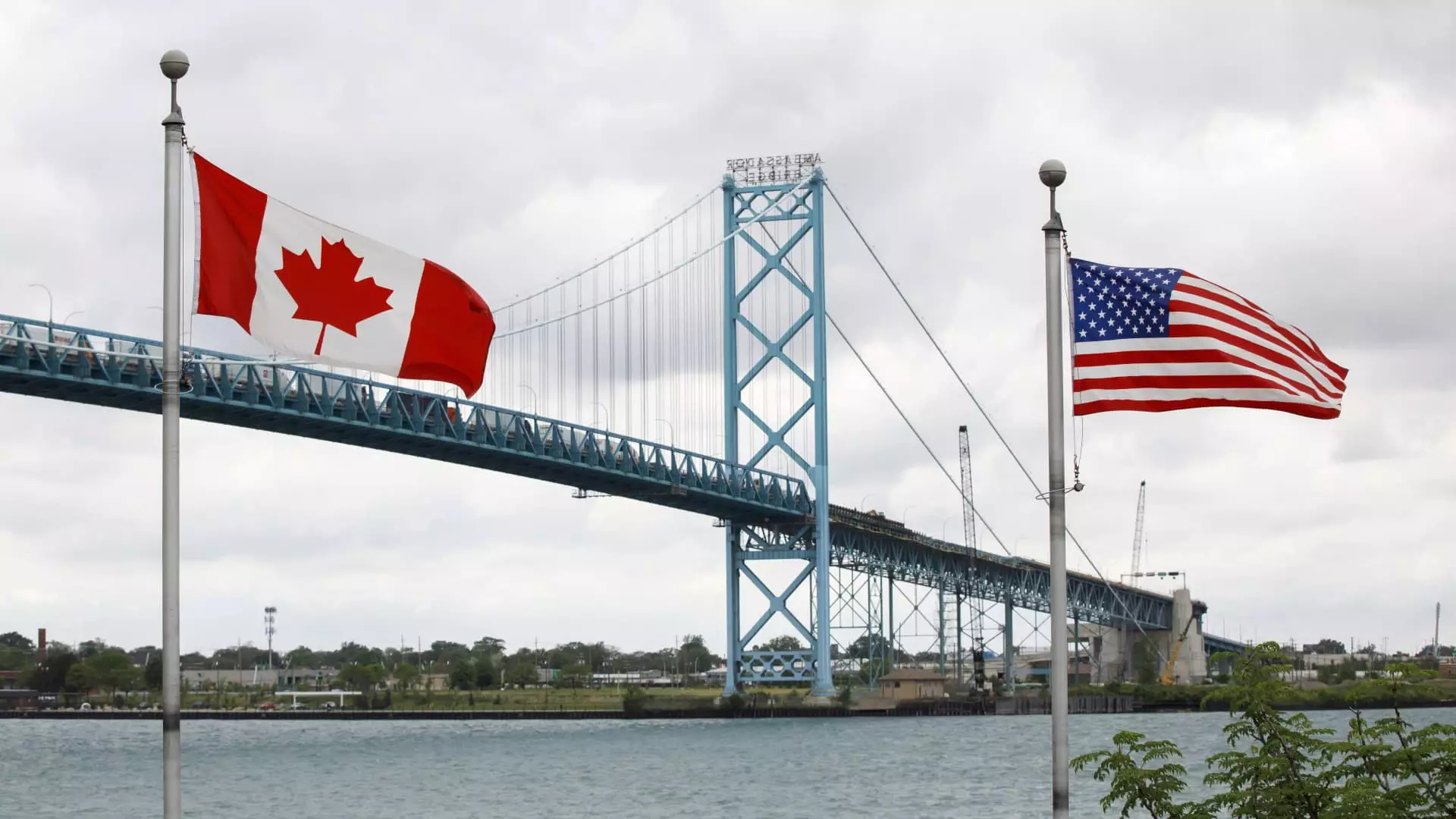The automotive industry in Canada, particularly in Ontario, is facing heightened uncertainty following President-elect Donald Trump’s announcement of potential 25% tariffs on imports from Canada, accompanied by a 10% levy on goods from China. This proposed measure has stirred apprehension among industry stakeholders who fear it could destabilize a sector that has shown signs of recovery after years of struggle. With tariffs acting essentially as a tax on foreign goods, the implications extend beyond Canadian soil, potentially straining the intricate supply chains that link automotive manufacturing across North America.
Ontario stands at the forefront of this issue, housing key manufacturers including Ford, General Motors, Stellantis, Toyota, and Honda. Collectively, these firms produced 1.54 million light-duty vehicles last year, a significant portion of which catered to the U.S. market. Ontario Premier Doug Ford has expressed grave concerns regarding the adverse effects that tariffs could impose, warning that both Canadian and American jobs could be jeopardized if manufacturers face increased costs that are likely to be passed to consumers. Such developments would not only harm the regional economy but also hinder the ongoing recovery of the automotive industry that has been navigating the repercussions of the COVID-19 pandemic.
At the heart of Premier Ford’s assertions is the current U.S.-Canada trade agreement, which has facilitated increased production and sales in the Ontario region. He emphasizes the need for a cooperative approach rather than confrontation, proposing a bilateral trade deal that excludes Mexico if necessary. However, Ford’s proposal requires Mexico to adhere to certain standards to join in the agreement. This suggests an acknowledgment that trade dynamics have evolved and need to be reshaped in light of current realities.
Trump has cited “national security” justifications for the imposition of these tariffs, a common strategy employed by politicians that raises questions regarding the motives behind such economic policies. As these tariffs could drive vehicle prices skyward—estimates range from $1,750 to upwards of $10,000 per vehicle—the backlash is likely to extend to consumers who would end up paying higher costs for automobiles. The potential economic ramifications are far-reaching, and tariff implementations could threaten the very foundation of the cross-border automotive ecosystem.
A significant aspect of this tariff discussion lies in the assembly process itself. Vehicles are seldom produced using components from a singular country; instead, parts are often sourced from multiple regions, leading to a complex web of cross-border dependencies. According to industry analysts, tariff-driven costs could impose an extra burden, translating to significant expenses for automotive manufacturers. This burden would inevitably lead to a ripple effect throughout the entire supply chain, putting pressure on suppliers and manufacturers in the U.S. as well.
Flavio Volpe, head of the Canadian Automotive Parts Manufacturers’ Association, points out that a double-digit tariff could be catastrophic, with potential ramifications for American auto suppliers as well. He takes a historical lens to illustrate the implications of border disruptions, such as during 2022 when Canadian truck driver protests obstructed the Ambassador Bridge. This incident alone highlighted the fragility of just-in-time production models relied upon by auto manufacturers.
Despite the uncertainty posed by potential tariffs, the Canadian automotive industry has shown resilience, bouncing back from production lows exacerbated by the pandemic. However, the future remains precarious. Challenges such as the escalating transition to electric vehicles and necessary adjustments in manufacturing practices add further complexity. The market’s slow pivot towards electric automotive technology has left some assembly plants in Ontario searching for direction, something that could directly affect employment and economic stability in the region.
As Canadian Prime Minister Justin Trudeau finds himself responding to increased pressure, the automotive industry’s prosperity seems inextricably linked to the decisions made in Washington. Industry observers like Charlotte Yates emphasize the importance of clarity in public policy and political attitudes moving forward to ensure the sector’s health.
Ultimately, Premier Ford has called for a partnership between the U.S. and Canada, asserting that efforts should be focused on addressing challenges posed by countries outside the North American region. By fostering collaboration rather than confrontation, the interconnected industries on both sides of the border stand a better chance of not only surviving but thriving in the global automotive landscape. As this situation unfolds, stakeholders will be watching closely, aware that the ramifications of such policies could reverberate through the economy for years to come.

